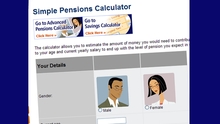Pensions are a blind spot for most people, whether in work or not, whether staff or self-employed.
But they should be seen as something really exciting – a means of being paid to do nothing when it comes to retirement.
When you leave school or college, putting money by for a pension doesn’t seem important – and largely this is true.
If you’re not on a large salary and are struggling to make ends meet - particularly if you have a big student loan, or you’re a first-time buyer saddled with a large mortgage - it mightn’t make sense to invest a large slice of your income in a pension.
But don’t be put off. Something like a PRSA - a form of personal pension - is essentially a savings account, albeit one you can't access until retirement.
The amount of money you put in every month needn't break the bank and you can increase it as you get older and your income goes up. The other big benefit of investing in a pension are the tax benefits.
For those in employment, pensions can be just as much of a blind spot. It is easy to sign on the dotted line and forget about your pension until you retire. By then, if there are problems, or you haven’t contributed enough, it will be too late.
So all the independent experts will advise you to make it your business to learn about pensions.
This is a quick guide put together with the help of the Department of Social Welfare, the Pensions Board and the Pensions Ombudsman.
The Pensions Board and Pensions Ombudsman both have excellent booklets on some of the most intricate issues. These can be downloaded and we have provided all the relevant links where appropriate.
You will also find contact details for all the pension agencies in our main Quick Links section which you will find in a tab on the RTÉ Money homepage.
State, personal and occupational pensions
There are three types of pensions: State, personal and occupational pensions.
The state contributory pension, at its maximum, will give you €230.30 a week up to the age of 80 and €240.30 if you are over 80.
There are two types of personal pensions for the self-employed and those who want to top up their pension savings.
Personal Pension
This is a Retirement Annuity Contract (RAC), the formal name for a personal pension plan, approved by the Revenue, that is managed for you by a life-assurance firm or investment company.
Anyone who earns an income but can’t join an employer’s pension scheme can set one of these up. You have to set it up yourself and claim tax relief yourself each year. If you are employed, your company cannot usually contribute to an RAC.
Personal Retirement Savings Account, or PRSA
This is a relatively new type of pension contract that was introduced in Ireland in 2003. It is what is known as a ‘defined contribution plan’ and is a contract between an individual and a PRSA provider which is approved by the Financial Regulator.
Virtually anyone can set one of these up and employers can make contributions. They are flexible in that you can take them from job to job. You can also increase, decrease or stop your contributions at any time without charge.
Occupational pensions
These are many and varied and depend on the scheme set up by your employer. The level of contributions you and your employer make will also depend on the plan you are in and whether you are in the public sector or the private sector.
How much should I save a month?
Pension experts say a typical middle-income (anyone earning about €70,000) earner contributes about €200 to €250 a month to their pension.
Using some basic calculations here’s what you need to keep your wallet full when you retire. There are two very simplistic scenarios but they will give you an idea of the scale of savings you need to put by to generate a certain level of income.
What would you like to earn a year? How much you would need in the pot?
If you want to earn €50,000 a year in retirement, you need around €835,000 in the pot.
If you want to earn €100,000, you need around €1.67m in the pot.
 Try out the Pensions Board calculator link below for a more detailed analysis.
Try out the Pensions Board calculator link below for a more detailed analysis.
Detailed Guides:
• RAC
• PRSA
Useful links

